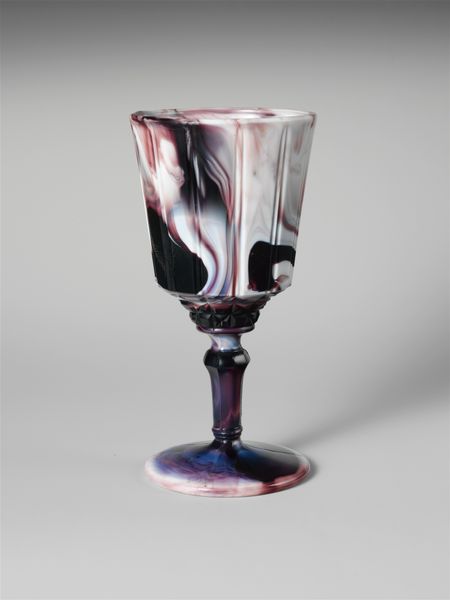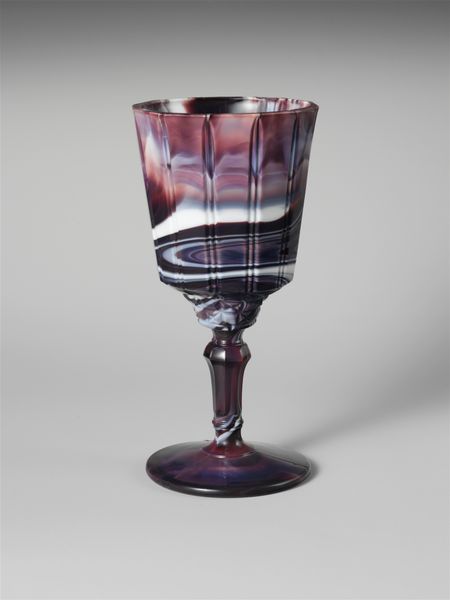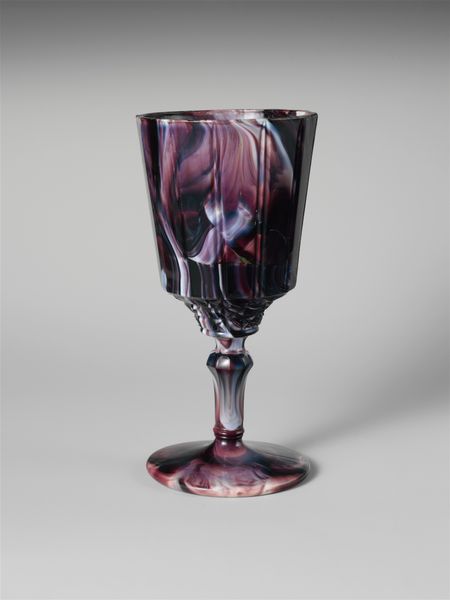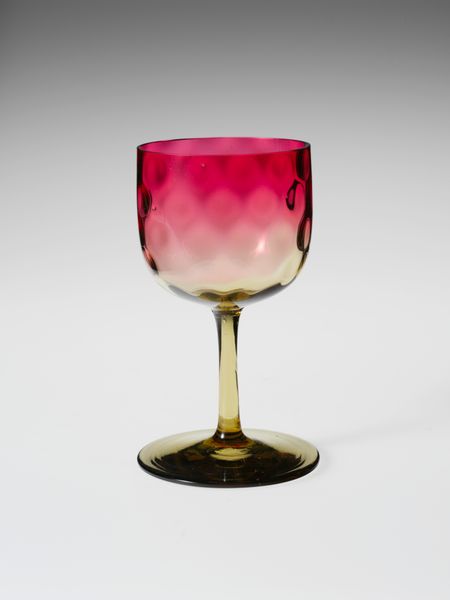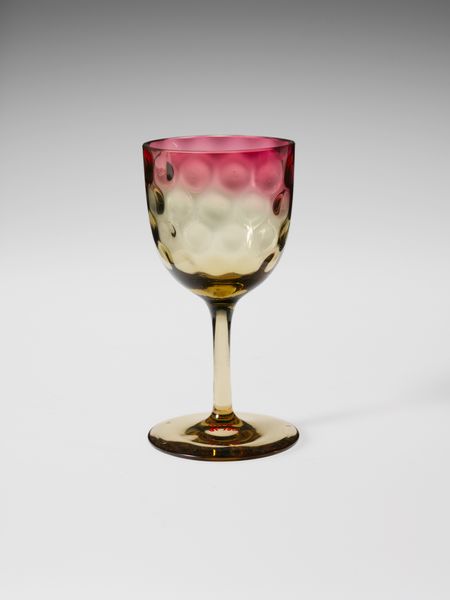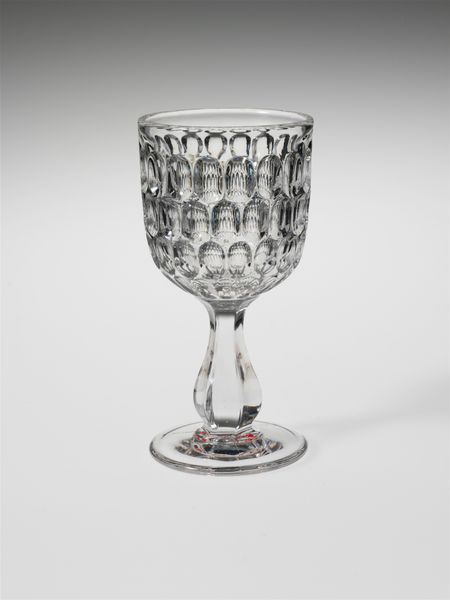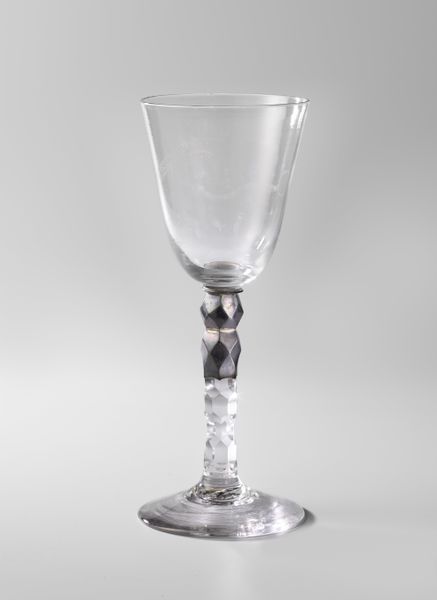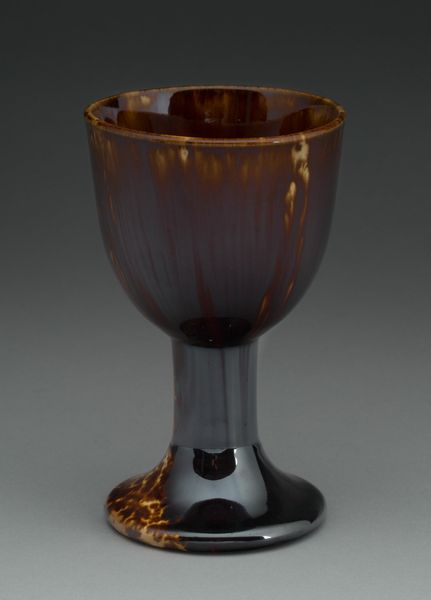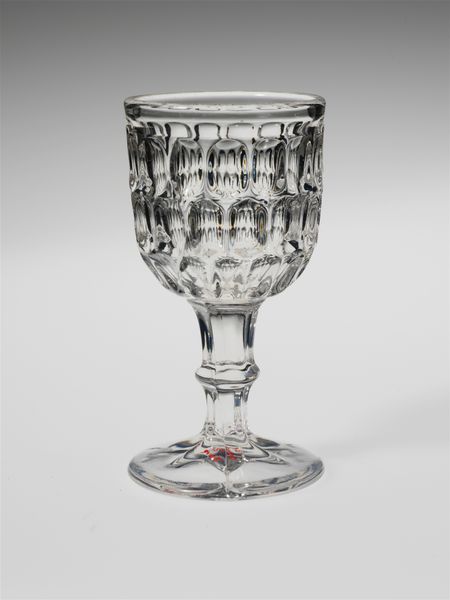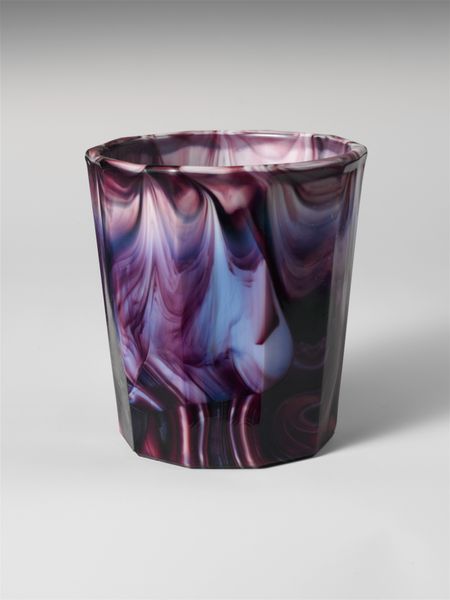
glass
#
glass
#
geometric
Dimensions: H. 6 3/8 in. (16.2 cm)
Copyright: Public Domain
Editor: This is a glass Goblet created by Challinor, Taylor and Company between 1870 and 1890. The swirling colours of purple, white, and black are really striking, giving it a very unique look for glass. What can you tell me about it? Curator: What I notice immediately is how the materiality of the glass itself – its ability to be molded, coloured, and swirled – dictates the aesthetic. Consider the means of production. This isn't just a functional object; it reflects the industrial processes that allowed for this kind of manipulated glass to be produced en masse. Editor: So, it’s not necessarily about a message or a story but more about the materials themselves? Curator: Precisely. And think about consumption. This goblet wasn’t meant to be hidden away. It was made to be used, to be seen, to be displayed. The swirling colors, the geometric design – these aren't just decorative flourishes; they're part of a larger cultural moment of increased availability of decorative items. What do you make of its shape? Editor: The shape is actually pretty simple, almost geometric with the straight lines near the top and basic circular base. It seems functional but the marbled colors complicate it a bit. Curator: Exactly! The tension between function and decoration speaks to the changing role of the decorative arts during this period. It challenges that boundary. So how do you now see this object beyond its surface beauty? Editor: Now I see the goblet not just as pretty glass, but also as a symbol of its time, showing off the ability to mass-produce beautiful and decorative objects, and it pushes past distinctions between "high art" and everyday items. Thanks for opening my eyes to this, so insightful! Curator: My pleasure. Seeing art through a material lens offers a whole new way to appreciate its role in culture and society.
Comments
No comments
Be the first to comment and join the conversation on the ultimate creative platform.
